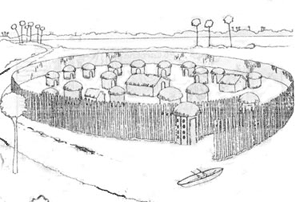
European AccountsThe vast majority of what we know about the Timucua comes from written European accounts of their contact with them. Many of these French and Spanish written records are biased and therefore somewhat untrustworthy in their depiction of the Timucua. They could have altered their accounts to make themselves look better. Many of the Europeans sought to convert the Timucua to Christianity, which is reflected through some of the Europeans’ intense language about Timucua ritual. European writings about the Timucua are still an extremely valuable resource, however, especially information that is repeated throughout different accounts. Tribal PartnersThe park works with and hopes to learn more from consultation with members of the Seminole Tribe of Florida, the Muscogee Nation, and others. ArchaeologyArchaeology is the science of learning about societies and cultures through their material remains, which can be things like trash, human remains, or old structures and buildings. Archaeology offers more definitive answers to questions we have about the lives of the Timucua. Archaeology shows us how the Timucua lived before Europeans arrived in North America. For example - Theodor de Bry made a lot of engravings, based on the drawings of Jaques Le Moyne, that shows his interpretation of the Timucua. In one of his drawings, a Timucua village was depicted as being surrounded by a wall. However, no archaeological excavation of a Timucua village has ever been able to prove the existence of such a wall. Additionally, de Bry drew the central council house square when it would have been circular. 
NPS Photo |
Last updated: September 17, 2025
